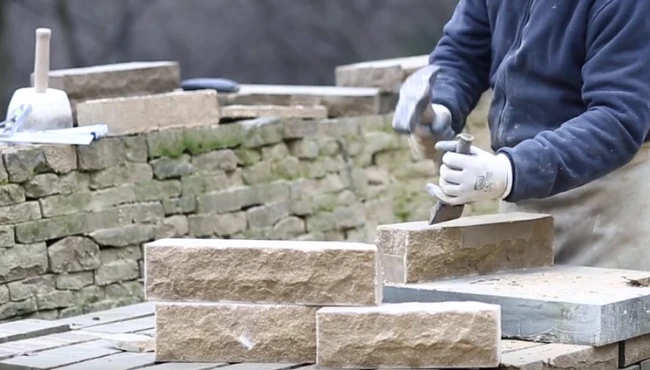What does a dryliner do?
A dryliner is essentially a skilled tradesperson responsible for creating interior walls and ceilings in buildings. They work with a variety of materials such as plasterboard and metal studwork or other drywall systems, creating smooth and flawless surfaces. They carefully measure, cut and fix these panels to ensure that the end result is not only aesthetically pleasing but also structurally sound. A ceiling fixer, on the other hand, specializes in creating flawless ceilings and takes care of finishing touches such as lighting and ventilation systems.
Required skills
Precision is the name of the game for drywall installers. These professionals must have a keen eye for detail, impeccable measuring skills and a knack for problem solving. The ability to work with a variety of tools and materials, as well as a good understanding of construction drawings, increase their effectiveness. Physical dexterity is vital as the job often requires handling heavy plasterboard and working in confined spaces. Effective communication is key, as drywall installers often work closely with other construction professionals to ensure smooth project execution.

Qualifications
Achieving NVQ Level 2 or NVQ Level 3 in Interior Systems is an important stepping stone for aspiring dryliners. These qualifications confirm the individual’s competence and understanding of the trade. Holding a blue CSCS or gold CSCS card further enhances employability and demonstrates a commitment to safety and professionalism on construction sites.
Benefits
Working as a dryliner has its benefits. The demand for skilled professionals in the construction industry provides a steady stream of employment opportunities. In addition, the versatility of the projects makes the work interesting and provides continuous learning opportunities. The satisfaction you feel at work often comes from seeing the tangible results of your craftsmanship.
Challenges
While the job is rewarding, it’s not without its challenges. The job can be physically demanding, requiring long periods of standing, bending, and lifting. Adapting to different working environments and tight deadlines is crucial. Precision is non-negotiable, and any errors can result in costly rectifications.
Career path and progression
A dryliner’s career path often starts as an apprentice, with progression to a qualified tradesperson. Experienced dryliners may advance to supervisory or managerial roles, overseeing projects and teams. Continuous learning and staying abreast of industry trends contribute to career advancement. Specializing in niche areas, such as acoustics or fire-resistant installations, can open doors to unique opportunities.
Statistics
Dryliners (ceiling fixers) in the UK* – Prognosis
Average Annual Increase
ARR**
SOURCE: CITB ” Labour Market Intelligence Report (2024 – 2028)”.
* These prognosis calculations assume constant ARR and growth rate without significant external disruptions.
** ARR – Annual Recruitment Requirement is a metric used to estimate the number of new workers needed annually to meet labour market demands in a specific industry, region, or occupation.
How much could you earn as a dryliner
The financial rewards for qualified dryliners and ceiling fixers are tempting. Entry-level positions can start at around £22,000 to £27,000 per annum. As experience increases, this can rise to £35,000 to £42,000 or more, especially for those in supervisory or managerial roles. Specialized skills and additional qualifications can also lead to higher earning potential.
*Information sourced from reputable recruitment sites and agencies, reflecting the latest job market insights and trends. Figures can vary based on factors such as specific job requirements, individual qualifications, and regional economic conditions. Additionally, self-employed professionals should account for expenses such as tools, materials, insurance, and transportation when calculating their net earnings.
Typical hours per week
Standard work hours per week
(Employed)
Working hours per week with overtime
(Employed and Self-employed)
A standard workweek for a dryliner typically ranges from 37 to 45 hours., spread across Monday to Friday. However, deadlines or specific project requirements may necessitate occasional overtime. The flexibility of the construction industry often allows for adjustments in working hours to accommodate different project schedules.
Conclusion
In conclusion, the occupation of a dryliner and ceiling fixer in the UK offers a fulfilling and financially rewarding career path for those with the right skills and qualifications. From the initial construction phase to the final touches, dryliners contribute significantly to creating functional and aesthetically pleasing indoor spaces. If you’re considering a career in construction, exploring the world of drylining might just be the right step for you.

